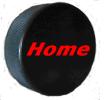 | ||||||
 | Hockey Terms & Rules | |||||||||||||||||||||
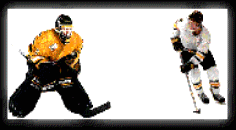 | ||||||||||||||||||||||
New to the Game? | ||||||||||||||||||||||
Take a look at the referees hand signals to learn what they mean? (click here) | ||||||||||||||||||||||
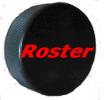 | ||||||||||||||||||||||
Penalties A penalty is the result of an infraction of the rules by a player or team official. It usually involves the removal from the game of the offending player or team official for a specified period of time. In some cases the penalty may be the awarding of a penalty shot on goal or the actual awarding of a goal. The referee signals a penalty with a hand signal. | ||||||||||||||||||||||
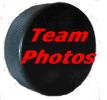 | ||||||||||||||||||||||
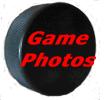 | ||||||||||||||||||||||
Typical penalties include, Hooking, applying the blade of the stick to any part of an opponent's body or stick and impeding his progress by a pulling or tugging motion with the stick. Holding Holding an opponent from moving with hands or stick or any other way. Tripping Using a stick, knee, foot, arm, hand or elbow to cause an opponent to trip or fall. Elbowing Using an elbow in any way to foul an opponent. Slashing, striking or attempting to strike an opponent with a stick or of swinging a stick at an opponent with no contact being made. Tapping an opponent's stick is not considered slashing. Cross-Checking, a player, holding his stick with both hands, checks an opponent by using the shaft of the stick with no part of the stick on the ice. Charging Running into, jumping into or charging an opponent. Interference Interfering with the progress of an opponent who is not in possesion of the puck. High-Sticking Carrying the stick about the normal height of the shoulders. Spearing Stabbing an opponent with the point of the stick blade while the stick is being carried in one or both hands. Most often these penalties will result in the offending player being removed to the penalty box for 2 minutes for each infraction.
Injury Potential Penalties, Injury Potential Penalties include Butt-Ending, Checking from Behind, Head-Butting, Spearing, Board Checking (or often called Boarding), Charging, Cross-Checking, Elbowing/Kneeing, High Sticking, Holding the Facemask, Slashing and Roughing. The Linesman may report such infractions to the Referee, following the next stoppage of play, that have occurred behind the play, and were unobserved by the Referee. If the referee believes the offending player intended to physially cause injury to the opposing player, the penalty can range from, a five minute misconduct to a game misconduct or suspension from future games. | ||||||||||||||||||||||
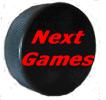 | ||||||||||||||||||||||
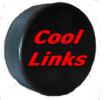 | ||||||||||||||||||||||
General Hockey Terms
Body Checking A legal body check is one in which a player checks an opponent who is in possession of the puck, by using his hip or body from the front, diagonally from the front or straight from the side, and does not take more than two fast steps in executing the check. Legitimate body checking must be done only with the trunk of the body (hips and shoulders) and must be above the opponent's knees and below the neck. If body checking is unnecessarily rough, it must be penalized.
Body Contact Contact that occurs between opponents during the normal process of playing the puck, provided there has been no overt hip, shoulder or arm contact to physically force the opponent off of the puck.
Break-Away A condition whereby a player is in control of the puck with no opposition between the player and the opposing goal, with a reasonable scoring opportunity.
Butt-Ending The condition whereby a player uses the shaft of the stick above the upper hand to jab or attempt to jab an opposing player.
Coach A Coach is a person primarily responsible for directing and guiding the play of his team. Along with the Manager and Parrents, he is responsible for the conduct of his team's players before, during and after a game.
Coincident Penalty A penalty of equal type (e.g., minor or major) assessed during the same stoppage of play, and for which neither team is reduced in on-ice numerical strength. A coincident penalty never causes either team to be ``shorthanded'' for purposes of penalty termination if a goal is scored.
Goalkeeper's Crease Areas marked on the ice in front of each goal designed to protect the goalkeepers from interference by attacking players.
Delayed Off-Side A situation where an attacking player has preceded the puck across the attacking blue line, but the defending team has gained possession of the puck and is in a position to bring the puck out of their Defending Zone without any delay or contact with an attacking player.
Deflecting the Puck The action of the puck contacting any person or object, causing it to change direction.
Directing the Puck The act of intentionally moving or positioning the body, skate or stick so as to change the course of the puck in a desired direction.
Face-Off The action of an official dropping the puck between the sticks of two opposing players to start play. A face-off beings when the Referee indicates its location and the officials take their appropriate positions and ends when the puck has been legally dropped.
Goalkeeper A goalkeeper is a person designated as such by a team who is permitted special equipment and privileges to prevent the puck from entering the goal.
HECC The Hockey Equipment Certification Council is an independent organization responsible for the development, evaluation and testing of performance standards for protective ice hockey equipment., there are standards for face masks, helmets and skate blades.
Heel of the Stick The point where the shaft of the stick and the bottom of the blade meet.
Face-Off The location at which the puck was last legally played by a player or goalkeeper immediately prior to a stoppage of play. Off-Ice (Minor)
Official Officials appointed to assist in the conduct of the game including the Official Scorer, Game Timekeeper, Penalty Timekeeper and the two Goal Judges. The Referee has general supervision of the game and full control of all game officials, and in case of any dispute the Referee's decision shall be final.
Shorthanded Shorthanded means that a team is below the numerical strength of its opponents on the ice. When a goal is scored against a shorthanded team, the minor or bench minor penalty which terminates automatically is the first such non-coincident penalty (the minor or bench minor penalty then being served with the least amount of time remaining). Thus, if an equal number of players from each team is each serving a penalty(s) (minor, bench minor, major or match only), neither team is ``shorthanded''. | ||
Copyright © 2005 San Diego Ice Cubs All rights reserved. | |